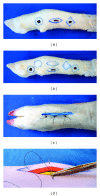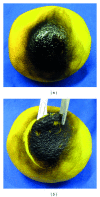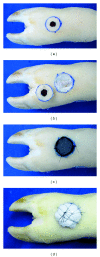Basic Plastic Surgery Skills Training Program on Inanimate Bench Models during Medical Graduation
- PMID: 23326659
- PMCID: PMC3544258
- DOI: 10.1155/2012/651863
Basic Plastic Surgery Skills Training Program on Inanimate Bench Models during Medical Graduation
Abstract
Due to ethical and medical-legal drawbacks, high costs, and difficulties of accessibility that are inherent to the practice of basic surgical skills on living patients, fresh human cadaver, and live animals, the search for alternative forms of training is needed. In this study, the teaching and learning process of basic surgical skills pertinent to plastic surgery during medical education on different inanimate bench models as a form of alternative and complementary training to the teaching programs already established is proposed.
Figures







Similar articles
-
Teaching elliptical excision skills to novice medical students: a randomized controlled study comparing low- and high-fidelity bench models.Indian J Dermatol. 2014 Mar;59(2):169-75. doi: 10.4103/0019-5154.127679. Indian J Dermatol. 2014. PMID: 24700937 Free PMC article.
-
Simulation-based cutaneous surgical-skill training on a chicken-skin bench model in a medical undergraduate program.Indian J Dermatol. 2013 May;58(3):200-7. doi: 10.4103/0019-5154.110829. Indian J Dermatol. 2013. PMID: 23723471 Free PMC article.
-
Organic bench model to complement the teaching and learning on basic surgical skills.Acta Cir Bras. 2012 Jan;27(1):88-94. doi: 10.1590/s0102-86502012000100015. Acta Cir Bras. 2012. PMID: 22159445
-
Teaching technical skills to surgical residents: a survey of empirical research.Clin Orthop Relat Res. 2006 Aug;449:108-15. doi: 10.1097/01.blo.0000224058.09496.34. Clin Orthop Relat Res. 2006. PMID: 16760810 Review.
-
Nonbiological Microsurgery Simulators in Plastic Surgery Training: A Systematic Review.Plast Reconstr Surg. 2019 Sep;144(3):496e-507e. doi: 10.1097/PRS.0000000000005990. Plast Reconstr Surg. 2019. PMID: 31461050
Cited by
-
An Innovative Skin Simulation Model to Augment Competency-based Training in Facial Plastic Surgery.Indian J Plast Surg. 2022 Feb 25;55(1):102-106. doi: 10.1055/s-0041-1740083. eCollection 2022 Feb. Indian J Plast Surg. 2022. PMID: 35444751 Free PMC article.
-
Buruli ulcer in Africa: Geographical distribution, ecology, risk factors, diagnosis, and indigenous plant treatment options - A comprehensive review.Heliyon. 2023 Nov 15;9(11):e22018. doi: 10.1016/j.heliyon.2023.e22018. eCollection 2023 Nov. Heliyon. 2023. PMID: 38034712 Free PMC article. Review.
-
Undergraduate plastic surgery education: problems, challenges, and proposals.Ann Med Health Sci Res. 2014 Sep;4(Suppl 3):S169-70. doi: 10.4103/2141-9248.141889. Ann Med Health Sci Res. 2014. PMID: 25364584 Free PMC article. No abstract available.
-
Mastering Surgical Skills Through Simulation-Based Learning: Practice Makes One Perfect.J Cutan Aesthet Surg. 2016 Jan-Mar;9(1):27-31. doi: 10.4103/0974-2077.178540. J Cutan Aesthet Surg. 2016. PMID: 27081246 Free PMC article.
References
-
- Askew DA, Wilkinson D, Schluter PJ, Eckert K. Skin cancer surgery in Australia 2001–2005: the changing role of the general practitioner. Medical Journal of Australia. 2007;187(4):210–214. - PubMed
-
- Wilkinson D, Bourne P, Dixon A, Kitchener S. Skin cancer medicine in primary care: towards an agenda for quality health outcomes. Medical Journal of Australia. 2006;184(1):11–12. - PubMed
-
- Collins AM, Ridgway PF, Hassan MSU, Chou CWK, Hill AD, Kneafsey B. Surgical instruction for general practitioners: how, who and how often? Journal of Plastic, Reconstructive and Aesthetic Surgery. 2010;63(7):1156–1162. - PubMed
LinkOut - more resources
Full Text Sources
